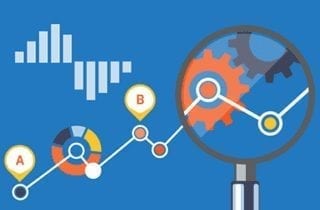About one in five kids will exhibit some type of severe social-emotional behavioral symptoms that would qualify for some level of support. And yet, very early since the pandemic began, there has been over a 20% increase of kids experiencing depression or anxiety after one month of lockdown with a disproportionate impact on students from minoritized populations.
Presented by Nathaniel von der Embse, Ph.D., NCSP, Associate Professor of School Psychology, University of South Florida; and Stephen Kilgus, Ph.D., Associate Professor of School Psychology, University of Wisconsin-Madison
Presented by Jaime Harris, Ed.S., NCSP, School Psychologist, Co-Founder of eduCLIMBER, Illuminate Education
For leaders and teachers, discussing data gives everyone a common understanding of where their students are and a clear plan of action
In this edWebinar, hear how new master scheduling can be used to make sure all students participate in college and career readiness.
This edWebinar will cover guidelines for ensuring data privacy in any school system’s use of technology and how to make student data privacy a district-wide priority.
At first, educators could count the number of edtech programs in their school on one hand—and the number of users wasn’t too much more. Later, schools used spreadsheets and written reports to determine usage, and developers had to wait months, possibly years to get and analyze efficacy data. Now, when usage data is available on a daily basis, developers and educators have a shared interest in that information. During their edWebinar, “Edtech Usage Data: Key to Planning Efficacy Research,” Dr. Denis Newman, Co-founder of Evidentally, Inc., and Kylene Shen, VP of Marketing at Evidentally, Inc., explained why usage data studies are beneficial to edtech companies and schools as well as what types of additional studies can provide relevant insights.
In a 2018 survey, the majority of school districts either have 1:1 as a current goal or have already achieved it. Along with a 1:1 goal, comes the deluge of edtech tools, software, and applications into classrooms. School districts are struggling with the fact that 70% of purchased licenses for edtech programs don’t get used at all within the school year and only 10% of teachers know how often students should use edtech programs to drive learning outcomes. In a recent edWeb.net edWebinar, Jena Draper, Founder and General Manager of CatchOn; Mike Schwab, Education Team at Google; and Suzy Brooks, Instructional Technology Director for Mashpee Public Schools, MA, point out that in order to combat this deluge of technology, it is imperative that school districts address the tech usage data that impacts and drive success in classrooms. While it is believed that the barrier to district leaders and classroom teachers using more data is that they don’t have time to look at it, 33% of districts and teachers say the real challenge is that information is in too many places for them to access.
In this edWebinar, we will walk through several examples of how different companies have used their usage data, combined with publicly available school demographic data, to identify and characterize school and district users that are the strongest product implementers.
In this edWebinar, educators will learn how to use data to meet the needs of the whole child assuring all learners receive an equal opportunity to learn.









